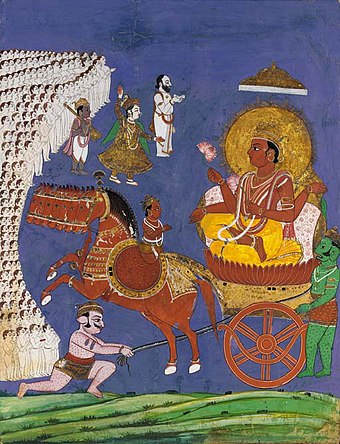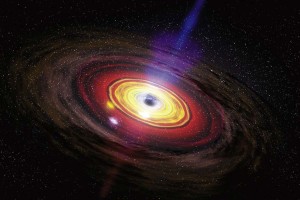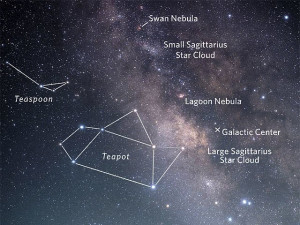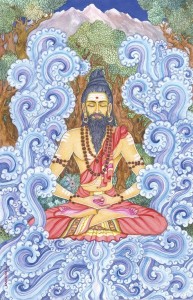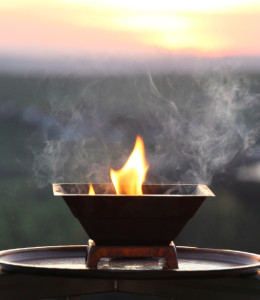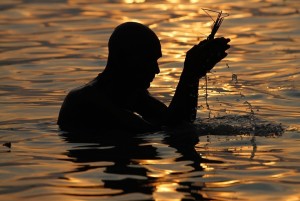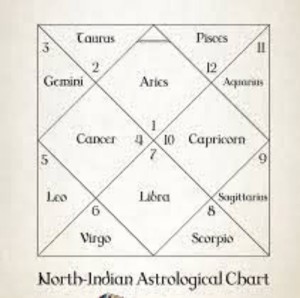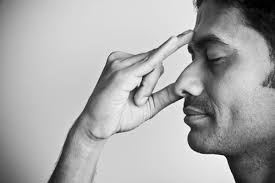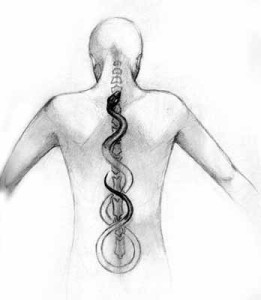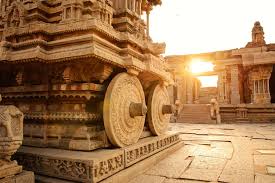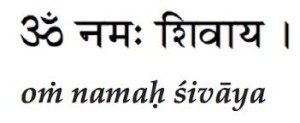The yoga of the sun is an ancient tradition, where the human being is revering the Sun as a life giver and in that way worships the Sun also as the inner self dwelling in the spiritual heart.
The Sun is the most visible representation of the deity, the veritable “Face of the God” as the ancient Vedas eloquently state. This solar religion or solar dharma generally occurs along with a cult of the sacred Fire (yajna) and the mystic Moon and other aspects of light, and as part of a worship of nature as a whole and of the cosmic mind.
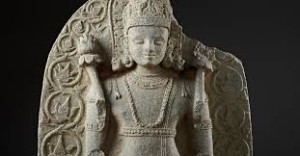
THE VEDIC CULTURE
The sun (Surya) was one of the chief deities in the Vedas. He was recognized as the source of light (Dinkara), source of warmth (Bhaskara).
In the Vedas he is also referred to as the source of all life, the center of creation and the center of the spheres.
The last statement is suggestive of the sun being recognized as the centre of the universe (solar system). In fact, many ancient Indian astronomers have also referred to the concept of heliocentrism. But it has to be conceded that the heliocentric theory of gravitation was also developed in ancient times (i.e. around 500 B.C.) by Greek astronomers.
What supports the contention that it could have existed in India before the Greek astronomers developed it, is that in Vedic literature the Sun is referred to as the ‘center of spheres’ along with the term Guru-tva-akarshan which seemingly refers to the sun. The Vedas are dated around 3000 B.C. to 1000 B.C but there are scholars who believe that it is much older, dated around 7000 BC.
(There do appear to be astronomical references in the Vedas to precessional eras in which the solstice point was in a constellation that would indicate a dating of 7000 BC. The records are found in stories in which the lunar mansion occupied by the full moon during the solstice is mentioned, thus providing a 13°-wide lunar mansion position for the solstice point. This all confirms that Vedic astronomy and cosmology is much older than scholars have been willing to allow.)
Thus the heliocentric idea could have existed in a rudimentary form in the days of the Rig Veda and was refined further by astronomers of a later age.
Vedic civilisations were deeply skilled in agriculture. As a result, most of the deities in the Vedic period were primarily linked to nature.
Indra (Rain god), Agni (Fire god), Vayu (Wind god), Surya (Sun god) were few who emerged to be considered to be the primary deities of the Vedic period. The cow was their most valued domestic animal. She was referred to as the Mother Earth itself. Their superior skills in metallurgy and their initial advent into the plains of Punjab, where Indus valley thrived and had a highly advanced agricultural practices as well as pottery, allowed them to quickly acquire the necessary skills to tame the land and create bountiful harvest. They practiced crop rotation, used river silt and cattle manure to renew the fertility of the land and then use the same land year after year for cultivation. They irrigated the land by drawing water from wells or by diverting water from rivers and lakes through canals. So for that purpose, they used the astronomy to connect with the cycles of the Moon and Sun.
THE SOLAR SOLSTICE
Solar year has a similar pattern to the lunar month. In the 25th december, there is a ‘rebirth’ as the sun emerges from the winter solstice. As you may know, the shortest day of the year is known as the winter solstice. The Winter Solstice also relates to the Divine Mother as it is womb of the year and longest Night on which the Divine Fire Child is born which is the re-birth of the Sun.
It is interesting to notice that the 25th december was first a vedic celebration through the worship of Mithra, the invicible Sun.
While in India he diluted, he was accentuated in Persia and later spread throughout the roman empire, first accompanying the Roman legions, also led by officials and merchants. So the pagan feast of 25th became a christian celebration, as we know. The cult of Mithra survived in some parts of India through the zoroastrians refugees of the 7th-10th centuries called parsis, persecuted in Persia by muslims. The primitive holy book of Mithra is the Avesta.
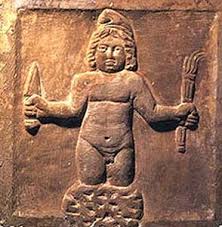
This particular day of the year, the sun is born anew and ascends in energy as the days grow longer. This cycle echoes the rebirth of the moon after its dark phase and the movement towards full moon, as the sun moves towards the summer solstice. The peak of energy in the yearly cycle is the longest day of the year, or summer solstice after which the sun descends towards its symbolic ‘death’ again. Plants follow mainly the cycles of the sun, commonly flowering in spring as the sun gains in strength and brightness, gradually reaching the maximum intensity of growth near the summer solstice and then producing the ‘fruits’ of their labours in autumn and dying or going dormant as the sun wanes.
THE YUGAS AND THE GALACTIC SUN
With their advanced knowledge in astronomy, vedic astrologers even established a bigger cycle called yuga or cosmic cycle of 4-ages of roughly 25000 years in total. We could consider this period equal to one year in the life of humanity.
In one story this process of increasing limitation is envisioned as a cosmic cow standing with each leg in one quarter of the world; with each age that passes a leg is lost, resulting in the absurd and unstable world we live in today-the kali yuga- a cow balancing on one leg.
Sri Yukteswar says in his book The holy science:
« . . . the sun, with its planets and their moons, takes some star for its dual and revolves around it in about 24000 years of our earth—a celestial phenomenon [precession]. . . . The sun also has another motion by which it revolves around a grand center called Vishnunabhi, which is the seat of creative power, Brahma, the universal magnetism. Brahma regulates dharma, the mental virtue of the internal world. »
Vedic scholar and teacher David Frawley assessed Yukteswar’s model and adds some clarity: “When the Sun is on the side of its orbit wherein its dark companion comes between it and the galactic center, the reception of that cosmic light appears to be greatly reduced. At such time, there is a dark or materialistic age on Earth called Kali yuga.
When the sun is on its opposite side of its orbit and has an open reception to the light of the galactic sun,then there is a spiritual and golden age on Earth, the satya yuga where the humanity appears at its peak of intelligence and wisdom.
The sun’s dark companion thus appears to possess a negative magnetic field which obstructs the cosmic light of the galactic center from reaching us on Earth”.
Moderns astronomers have begun to suspect the existence of such a star which could explain the irregularities in the orbits of neptune and pluto suggesting the gravitationnal influence of a more distant heavenly body within the star system. Modern astronomy estimates the cycle of yuga at around 25900 years.
The galactic center is connected to the central spiritual Sun of the galaxy, and the spiritual influences that it brings to us, as well as the higher energies of life and intelligence.
The galactic center also reflects the energy of the Divine Mother and the primal Goddess force the Shakti that creates the universe, particularly in the form of Adya Kali or the primal form of the Great Goddess of Time and Eternity.
In fact, Frawley believes that all of Vedic astrology “orients the zodiac to the galactic center as the source of creative intelligence, mediated to human beings by the fixed stars of Sagittarius and the planet Jupiter, called “guru”the Divine teacher. Jupiter represents and directs the light of the galactic sun into our solar system.”
Frawley gives an astronomically accurate sidereal location for the Galactic Center: 6° 40’ Sagittarius, falling in the middle of the nakshatra Mula.
It is the departure point from where emanates the light which determines life and intelligence on Earth. Vedic astrology is based mainly on the cycles of the Moon and created the 27th nakshatras, where the Moon resides in one nakshatra per day. It makes for easier system of observation than the sun system in which the Moon resides in each sign for 2 and a half day. The first nakashtra, Mula signifies “roots” in sanskrit while the last nakshatras of the sequence, falling in Scorpion, is called “Jyestha”, the eldest. This shows that the ancient knew about the galactic center and named their nakshatras according to that knowledge.
The science of today calculates this center at about 27,000 light years away from the Earth, which places us about halfway out in the Milky Way’s disk. A bulge of stars surrounds the center, blending with a straight bar-like glow of stars that connects the center region to the spiral arms of our Galaxy.
Astronomers found the first real evidence for a supermassive black hole in our Galaxy.
in 1974 when they detected strong radio emissions coming from a spot they called Sagittarius A*.The black hole at Sagittarius A* seems to have a mass of around 4 million times that of the Sun. But black holes are so dense that the size of the corresponding black hole would only be about about 20 times the size of the Sun. That is far too small for us to see from Earth, even with our most powerful telescopes.
OUR OWN CENTER
Indian philosophy says that man is the microcosm of the Universe. The Universe is referred to as the brahmanda (i.e. Egg of Brahma) and Man is referred to kshudra-brahmanda (i.e. Little Egg of Brahma). All planets of our solar system turns harmonously around one centre, the Sun as our solar system turns around the galactic center.
Based upon the idea of continuity between the cosmos and man, and between spirituality and materiality, mystic union between man and the cosmic deity became an important religious practice. We have our own solar system and cosmos inside us and we have to find our own center, our own sun to be in a state of harmony. When we achieve this, every particles of our beings move in rhythm with the universal life.
To unite with our center is also be back in unity with the universal consciousness. As our ears filters sound, eyes filters light, then brain filters consciousness, a cosmic consciousness but sees a tiny parts of it. Indeed, the eye can see only the wavelengths of electromagnetic energy that correspond to visible light, our ears can register only a narrow range of sonic frequencies too.
The wondrous experience of consciousness itself seems to require a brain to give rise to it and a brain-based mind to perceive it. Consciousness tricks us into perceiving a false duality of self and other when in fact there is only unity.
We are not separate from other aspects of the universe but an integral and inextricable part of them.
And when we die, we transcend the human experience of consciousness, and its illusion of duality, and merge with the universe’s entire and unified property of consciousness. So, ironically, only in death can we be fully conscious. We can also achieve this state of consciousness during life by merging our sun, our center into the universal soul, the galactic sun.
As explained by Omram Mickael Aivanov in its yoga of the Sun, returning back to the source is like “climbing on a circular platform, which would then start to spin, and gradually as it spin faster and faster, the centrifugal force becomes stronger and those who are far from the center loose their balance and are thrown out to the outer edge.
When you move closer to the center, you find yourself inondated with a great sense of peace.
When we go out in the morning to contemplate the sun and draw strenght from it, when we try to enter into it and draw it into us, we are moving away from the outer fringe, back towards the source, in peace, light, liberty and union with God. The sun is the center of the solar system and the planets move harmoniously in orbit around it and it is this harmonious movement of the planets around the sun that must be duplicated by our own cells. But before this can be, we have to discover our own centre, the Sun, God the spirit within us.”
SUN AS THE SACRED FIRE: AGNI HOTRA
In the vedic time, special fire ceremonies were performed by many ancient cultures across the planet, including the Hopi Native Americans, Mayans, Shamans of Siberia.
Agnihotra is the resucitated fire science which can be performed by anyone from any walk of life.
The sun yoga is practiced back to vedic civilizations of the Saraswati (-3000- 500 BC) through fire offerings where the god Agni was representating the Sun on Earth. Offering of ghee, rice and other foods in the sacred fire was made during rituals along with mantras chanting. Agni means fire and hotra means healing. This vedic ritual is even seeing a growing interests among westeners as a way to heal the environment and ourselves. It is done on sunrise and sunset. It requires a copper pyramid of specific size and shape, dried cowdungs, ghee (clarified butter) and organic brown rice. Exactly at sunrise or sunset the mantras are spoken and a small amount of rice and ghee is given to the fire.
During Sunrise/ Sunset the many electricities, ethers and more subtle energies emanating from the sun extend to the earth and produce a flood effect at the coordinates where the sun is said to rise/set. Tremendous amount of energies, created by the rhythms and vibrations of the sanskrit mantras, are gathered around the copper pyramid and thrust into the atmosphere by fire.
A magnetic-type field is created, which neutralizes negative energies and reinforces positive energies. This HOMA or healing fire purifies the atmosphere of pollutants and neutralizes also the radiactive radiations. Many researchs shows that agni hotra has a very powerful effects on plants and soils. Its effect covers an area of 60 hectares. The participants benefits also from the Homa. Agnihotra help to reduce stress, improve overall health, gives one increased energy and induces higher state of consciousness. Ashes are also used in the soil, water and as a sacred medicine externally and internally.
Mantras of agni hotra:
Sunrise mantra:
suryāya swāhā
suryāya idam na mama
prajāpataye swāhā
prajāpataye idam na mama
Sunset mantra:
āgnaye swāhā
āgnaye idam na mama
Prajāpataye swāhā
prajāpataye idam na mama
THE SUN IN YOGA: SURYA NAMASKAR
Yoga itself is said to be a gift of the sun to human beings, from whose power our inner consciousness and intelligence arises. The original founder of Yoga Darshana among the Vedic schools of philosophy is Hiranyagarbha, the golden embryo, which represents the sun, who passes on his teachings to the Rishi Vasishta.
An other way to worship the Sun is to practice the main asana sequence of the hatha yoga called Surya namaskar, the sun salutation. At sunrise or at sunset, the sun salutation is practiced since thousands of years in India.
The 12 postures serie is done along with the recitation of the 12 names of the sun.
Each name is associated with one specific posture and chanting internally, focusing on prana (the breath), the subtle energy transmitting by the Sun in our being.
(The great mantra Om is the sound of the sun as it moves in the sky.)
1.Tadasana
ॐ मित्राय नमः Om Mitrāya Namaḥ (affectionate to all)
ॐ रवये नमः Om Ravaye Namaḥ (cause of all changes)
ॐ सूर्याय नमः Om Sūryāya Namaḥ (who induces all activity)
ॐ भानवे नमः Om Bhānave Namaḥ (who diffuses light)
5. Khumbhakasana
ॐ खगाय नमः Om Khagāya Namaḥ (who moves in the sky)
ॐ पूष्णे नमः Om Pūṣṇe Namaḥ (who nourishes all)
ॐ हिरण्यगर्भाय नमः Om Hiraṇya Garbhāya Namaḥ (who contains everything)
ॐ मरीचये नमः Om Marīcaye Namaḥ (who possesses raga)
ॐ आदित्याय नमःOm Ādityāya Namaḥ (God of Gods)
ॐ सवित्रे नमः Om Savitre Namaḥ (who produces everything)
ॐ अर्काय नमः Om Arkāya Namaḥ (fit to be worshipped)
12.Tadasana
ॐ भास्कराय नमः Om Bhāskarāya Namaḥ (cause of lustre)
To get more informations on sun salutation, please refer to my last article Surya namaskar
GAYATRI MANTRA
I lived several years in Varanasi and always rejoiced to see dozen of hindus immersed in Ganga, theirs hands folded in pranam mudra, reciting the gayatri in front of the rising sun. This ritual is going on since time immemorial and has a deep impact on the psyche and soul. It is the main mantra of the Vedas, issued from the Rig-veda and worshipping the sun as Savitri, the deity of the 5 elements.
ॐ भूर् भुवः सुवः ।
तत्सवितुर्वरेण्यं
भर्गो॑ देवस्यधीमहि ।
धियो यो नः प्रचोदयात् ॥
Om bhūr bhuvaḥ suvaḥ
tatsaviturvareṇyaṃ
bhargo devasyadhīmahi
dhiyo yo naḥ prachodayāt
– Rigveda 3.62.10
One of the traduction is:
“We meditate upon the supreme light of the Divine transforming Sun (Savitri) that he may stimulate our intelligence.”
An other translation, from Swami Vivekananda:
“We meditate on the glory of that Being who has produced this universe; may He enlighten our minds.”
This jappa should be reciting 108 times or using a multiple of 9, best is to be in the water, facing the rising sun.
THE SUN IN VEDIC ASTROLOGY
Sun a mild natural malefic in vedic astrology due to its burning effect upon crops and people at noon in such a country like India and also its rulership over ego and individuality which is not considered beneficial in indian society, driving the person away from the family circle. At the contrary, western astrology is considering the Sun as a benefic. In fact, western astrologers study a chart from the Sun sign (which change every months) and the ascendant. Indian astrology first look at the ascendant (every 2 hours), then the Moon sign (every 24 hours) then the Sun sign which comes on third position to examine a chart. But nonetheless, Sun has an extreme value in the chart as the representation of the father, power, authority.
Its energy is profound, and decides whether you become a radiant smiling face or hide behind the clouds of ego and aggression.
Sun in Vedic astrology represents the Soul. It is the representation of your outer self, of how you project yourself to the world and what makes you stand apart from the rest. It is the crux of one’s identity and how it is preserved. It is the courage and confidence you employ to fight off the everyday challenges.
A strong Sun in horoscope indicates a person with leadership qualities. Such a person usually enjoys a higher position in society and shares a cordial relationship with father. Native with positively placed Sun is also dependable, generous, and mature.
This fiery planet can be detrimental to health if negatively placed causing baldness, headaches, weak eyesight, blood circulation related problems, bone weakness, and heart problems. A weak Sun in horoscope can also affect one’s relation with father or cause problem to father. Natives with weak Sun usually suffer from low stamina, self-esteem, and indecisiveness. Too strong Sun can result in a domineering or aggressive personality. Such a person may be self-centered and someone who always seeks to be at the center of all action. The remedy for these problems can be with gems by wearing a ruby on the ring finger of the right hand. If it is ruling a malefic house, it should be rectified and strenghten by using mantras. The appropriate mantra for the sun is “OM SUM SURYAYA NAMAHA”. Meditating on the sun yantra is also an efficient remedy.
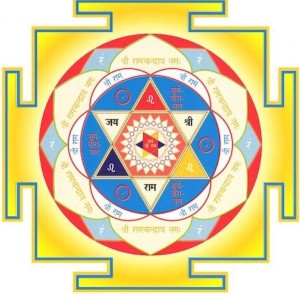
Wearing yellow clothes can help strenghten the Sun as well as making offering to the Sun, especially on Sunday.
THE SUN IN AYURVEDA
According to the tradition given in Brahmavaivartapurana, the creator of the universe, Brahma, while studying the four Vedas, separated Ayurveda from them. He is then stated to have imparted the knowledge of this science to Bhaskara (sun-god).
Surya, thereafter, wrote his own samhita on Ayurveda and taught the same to 16 disciples of whom Dhanvantari was the foremost. Dhanvantari is the Hindu god of medicine and an avatar of Lord Mahavishnu. He is mentioned in the Puranas as the god of Ayurveda. Dhanvantari emerged from the Ocean of milk and appeared with the pot of amrita (elixir for immortality) during the story of the Samudra whilst the ocean was being churned by the devasand asuras, using the Mandara mountain and the serpent Vasuki.
But also it is said that Brahma, who is said to be the first teacher of the universe, originally composed the Ayurveda. Having propounded the science of healing, Brahma propagated this knowledge through Daksha Prajapati, who taught this knowledge to Ashwini Kumaras, the sons of the Sun. So, as we can see in each story, Ayurveda is deeply linked with the Sun. Dhanvantari and the Ashwins twins are worshipped in India as the gods of Ayurveda.
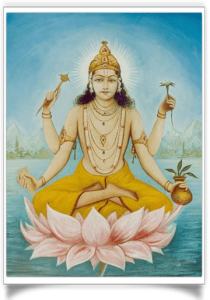
Ayurveda is based on the science of the 3 doshas or constitutions (see my lastest article on the doshas), which are Vata (wind), pitta (fire) and kapha (water) made out from the 5 elements. So to be more detailed, Vata is composed of ether and air, pitta of fire and water and kapha of water and earth, Vata is the main dosha and stands also for prana, the cosmic energy and divine breath, from it comes out the other doshas as the remaining 4 elements comes from ether, the most subtle of all elements.
The sun represents the prana, not simply as the breath, but as the immortal cosmic life force.
The Upanishads tell us that our own prana is our inner sun and the movements of our individual prana are measured by the movements of the outer sun in the sky.
Sons of the Sun, the Ashwins twins are associated with the dawn and are described as youthful divine twin horsemen in the Rigveda, travelling in a chariot drawn by horses that are never weary. The Ashwins are often related with rescuing mortals and bringing them back to life. In the Vedas, they are taught the science of Soma the elixir of Immortality and Bliss, and are hence associated with it. Among the stars, they are in the ashwini constellation in 00-13’20 Aries corresponding to the nakshatra ashwini, ruled by Ketu. People born in this constellation have generally lots of healing power.
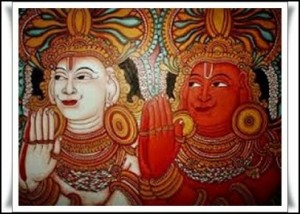
The Ashwins represent all the dualities in Yoga and the Vedanta, such as Prana Agni (Fire of Vital Force which is responsible for the digestion of Prana in the Body) and Soma (The Nectar/Ambrosia of the Mind).
They also represent the Yogic breath of Udana (upward moving) and Apana (descending) Vayus.
In yoga, they represents the light and the prana, the life-giving force present in the breath.
The Ashwins, as opposite poles are the Ida and Pingala (Lunar/Left nostril and Solar/Right nostril) subtle channels of Yoga in the subtle body, which grant a balance of both sides.
Ida grants the balance of kapha-dosha being lunar and feminine, while Pingala is of the pitta, relating to the sun and masculine. Vata is represented by the Sushumna or central nadi along the spine, where both are balanced and merged. So we can see that the Sun is present in vata dosha and pitta as well. The Moon as lunar and feminine force is present in kapha dosha but also vata dosha as well as a complementary force of the Sun in the prana.
The balancing of the Ashwin currents as Ida and Pingala, and also their dualities, such as Udanavayu (up moving breath) and Apanavayu (down moving breath) into Samanavayu (still breath) for complete health are hence important. It calms the mind, steadies the body and balances all nadis or subtle channels, chakras and pranas, hence the doshas.
It is only then, that we can release the potent powers inherit in the Ashwins, the great solar gods, which then, by balancing our body, grant us these inner powers to be able to heal ourselves.
Anuloma viloma pranayama
To get a state of complete balance of the 2 nadis, it is achieved by practicing one of the greatest of all pranayamas named anuloma viloma or alternate breathing.
By breathing in first by the nostrils and releasing the breath from the left nostril, one should then breath in by the left and withold the prana for few moments and then breath out by the right nostril. Again breath in by the right nostril, practice the retention of breath (kumbhaka) and breath out from the left….etc until you feel you have enough.
Kumbhaka is the balanced state where Ida and Pingala join to enter sushumna, the central nadi.
The tantric and yogic view is that: when the prana is entering the sushumna by balancing the lunar and solar currents of our body, the kundalini shakti, a sleeping cosmic energy described as a coiled snake in mula chakra is awakening and can then ascend towards the highest chakras. Shakti is uniting with Shiva, the energy with the consciousness and then followed an higher state of consciousness in the human being.
THE SUN IN HINDU DEITIES
Great Hindu avatars are identified with the sun. Sri Krishna states that he taught the original Yoga to Vivaswan, another form of the sun god. Sri Rama is related to the sun and the solar dynasty.
Lord Brahma represents the sun in its creative role, which he accomplishes through Vedic mantras. Lord Vishnu is the sun in his role as preserving the cosmic order.
Vishnu is called Surya Narayana, the sun as the cosmic person who dwells on the cosmic waters of space.
Lord Shiva, who is said to be of the nature of light, is identified with the sun as the solar power of dissolution, which is also the power of transformation and transcendence that takes us to moksha, liberation from all bondage and sorrow. Buddhists honour the Sun Buddha with fire offerings and meditations.
There are also many Sun temple in India that were built in the various time. The Konark Sun temple in Puri (Orissa) is one of the most popular temple in India. Built in the 13th century, it attracted thousands of tourists and pilgrims every year.
The Konark Sun Temple was built from stone in the form of a giant ornamented chariot dedicated to the Sun god, Surya. In Hindu Vedic iconography Surya is represented as rising in the east and traveling rapidly across the sky in a chariot drawn by seven horses. He is described typically as a resplendent standing person holding a lotus flower in both his hands, riding the chariot marshaled by the charioteer Aruna.
Nila yogini est certifiée professeure de yoga auprès de yoga alliance (ERYT 500) et ayurveda thérapeuthe par l’université du réputé David Frawley ( American institute of vedic studies). Elle offre des consultations et cours sur Genève. L’ayurveda est une science holistique millénaire en Inde et soigne l’être dans son ensemble. La consultation permet de cibler les déséquilibres dans les doshas (constitutions physiologiques) et les rétablir à l’aide d’une alimentation ayurvédique adaptée, des conseils en hygiène vitale, la phytothérapie, des exercices de yoga…
Elle pratique également le Jyotish, l’astrologie médicale indienne qui permet d’affiner son diagnostique et proposer également des remèdes comme la gemmothérapie et mantras, yantras….L’astrologie permet de mettre à jour les planètes fortes et faibles de la charte. La gemmothérapie rétablit l’équilibre des planètes sur le plan cosmique de l’être. Dans l’Inde ancienne et moderne également, l’ayurveda est géneralement associé à Jyotish car ce sont deux sciences soeurs.
Pour tous renseignements, aller sur la page du site consultation.
